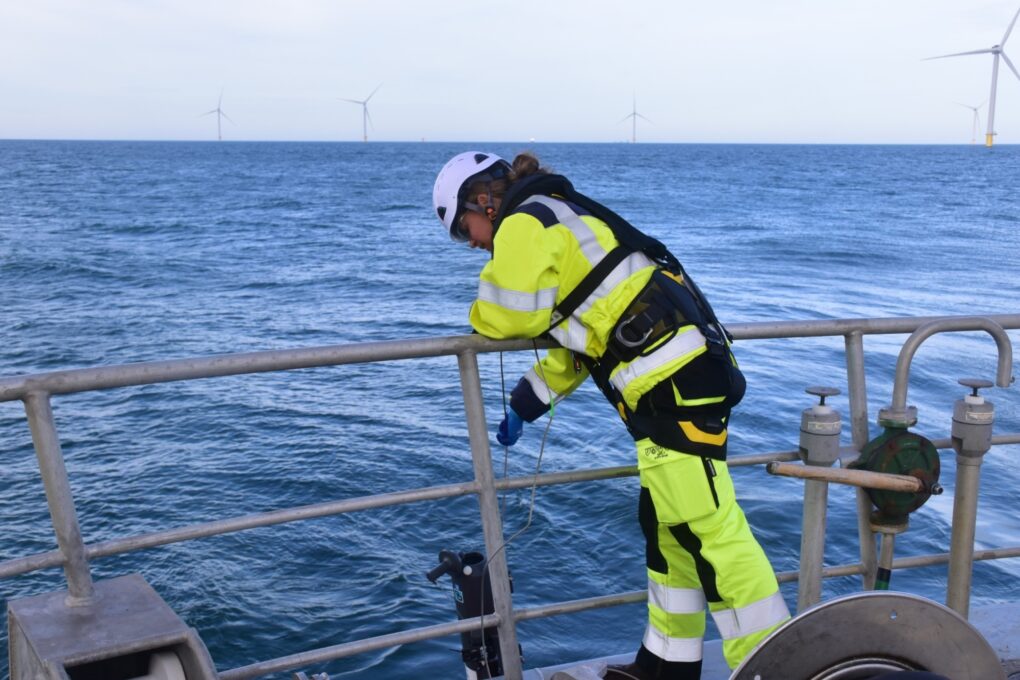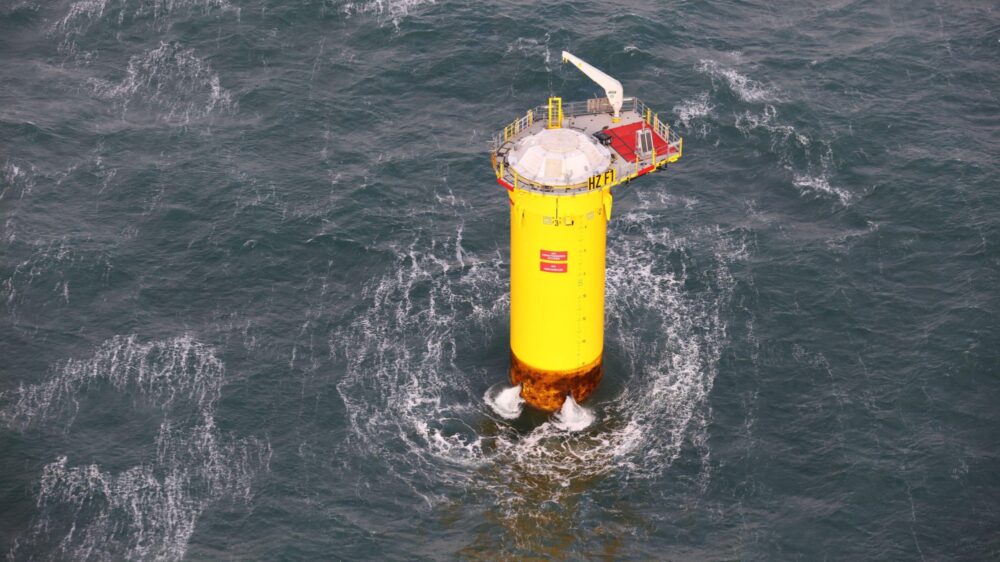“With a nature-inclusive transition to green energy, Vattenfall aims to make a positive contribution to marine life within offshore wind farms, in this case, Hollandse Kust Zuid.”
Iris Menger – Site Coordinator Offshore Wind Vattenfall

The Hollandse Kust Zuid wind farm, managed by Vattenfall, is one of the first offshore wind farms where water replenishment holes have been incorporated into the turbine construction. Each turbine has four holes that provide access to the inside of the wind turbine. Together with Vattenfall, Wageningen University & Research, Deltares, and Seaward, we are conducting research to understand the effects of the holes on marine life. For example: can they serve as shelter and feeding grounds for fish, anemones, crabs, and shrimp? The initial results are promising!
“With a nature-inclusive transition to green energy, Vattenfall aims to make a positive contribution to marine life within offshore wind farms, in this case, Hollandse Kust Zuid.”
Iris Menger – Site Coordinator Offshore Wind Vattenfall
What impact do water replenishment holes have on underwater life? That was the question we brought to Vattenfall in 2021. After receiving the green light to investigate it, we combined efforts with Wageningen University & Research and Deltares. This project also enabled us to test innovative monitoring techniques with the startup Seaward.
Our first mission began in 2021, where we gathered baseline measurement data. This was followed by multiple offshore expeditions. For each turbine, we measured biodiversity at six locations: on the seabed, just below the water surface, and at intermediate depths, both inside and outside the turbine.
By collecting water samples and performing e-DNA analysis, we extracted crucial information as to which animal species and organisms were present in and around the water replenishment holes. We also assessed water quality by examining salinity, temperature, oxygen levels, turbidity, and algae. Additionally, we monitored marine life at the six measurement points using GoPro footage and innovative techniques.
“What I love about this project is that we truly act as a bridge between science and industry. Additionally, we serve as a springboard for innovative startups. Seaward, for example, develops cutting-edge monitoring techniques that are being tested at sea thanks to this project.”
-Isaac de Boer-Ferrier, Project Manager at The Rich North Sea
The Rich North Sea is the driving force behind the launch of this project, bringing together various parties involved in the research. Along with contributing to the project’s financing, we organized the offshore missions, assembled talented teams, and managed technical processes.
Hollandse Kust Zuid is the world’s first subsidy-free offshore wind farm. It consists of four plots, covering a total area of approximately 225 square kilometers. The 140 turbines have a combined installed capacity of over 1,500 megawatts (MW), and each turbine features four water replenishment holes. Hollandse Kust Zuid is located 18 to 36 kilometers off the coast of North and South Holland.
The initial research results are very positive, and the water replenishment holes do, in fact, appear to enhance biodiversity. In our most recent mission at the end of 2024, we discovered that the inside of the turbines was teeming with crabs, starfish, fish, and other marine life. The results from this last mission are currently being further analyzed to validate these promising observations.
The discovery of various species within these openings paves the way for further research: If water replenishment holes can have a positive impact on marine life, this can inspire other wind farm developers to adopt nature-inclusive designs. In this way, sustainable energy and nature can strengthen each other.


